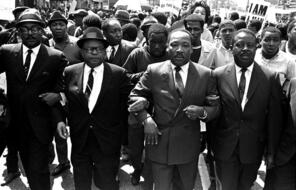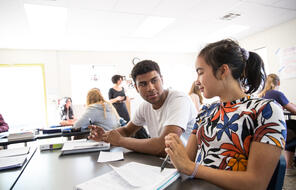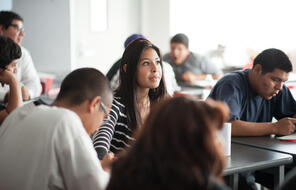Creating a Shared Identity for a Democratic South Africa
Subject
- History
- Social Studies
Language
English — USUpdated
Creating a shared national identity for the new multiracial democracy in South Africa has inspired ongoing debate. Is there a common identity that all South Africans can claim? In an address at the opening of the International Conference on National Identity and Democracy in 1997, the late Dr A. M. Omar, former minister of justice, offered this view:
Formal or legal apartheid may be dead, but the legacy of apartheid remains. In addition to the tribal, ethnic and racial consciousness (and identity if you will) which is with us every day of our lives, there is also the reality that our 40 million people do not constitute a homogenous group in that we are a multi-faith country. We are a people who practice a number of different religions. These factors impact on how people see themselves and how they perceive their own identity. So in addition to the emerging national identity, there is the reality of separate group identities and double or multiple identities . . . [E]very person in South Africa has more than one identity . . .
If I ask my brother what he is, he will tell me ‘I am a Muslim’. To him that is his primary identity. In social life that is coupled with another identity which relates to origin viz. an Indian identity . . . During apartheid great emphasis was placed on racial identity. But all Muslims are not Indian and all Indians are not Muslim. Many Muslims were also classified coloured and regard themselves as coloured. Some Muslims are indigenous Africans. So if you take the Muslim identity, it overcomes all racial identities . . . And yet that racial identity in South African society continues to be dominant in people’s minds . . . As in the case of Muslims, Christians are to be found amongst all racial groups and . . . the Christian identity is important to them.
At the same time because of the economic reality of South Africa, Coloured, African, Indian and white—those were the racial classifications of the apartheid years—are to be found working together in the same mines, factories and [on farms]. Also in commerce and in industry generally . . . In many of our trade unions and other worker formations, the identity which matters is that of a worker. During the last twenty years of apartheid, workers played a great role in overcoming separate identities and creating a worker consciousness amongst large sectors of South Africa’s working class people.
Amongst African, Coloured and Indian in terms of former racial classification there exists therefore more than one identity—the national (which is the future), the racial (which is the past) and a worker identity . . . [W]hat we are trying to create in South Africa is a dispensation which helps build a national identity, but which at the same time makes provision for people of different religions, languages and cultures to be secure in the new South Africa, and to be secure in the knowledge that their languages, religions and cultures are protected.
South Africa’s constitution recognises the duality of equal citizenship of all in one South Africa on the one hand . . . and diversity of South Africa’s people on the other . . . Freedom of association is one of the richest and most meaningful principles in the new Bill of Rights [of the South African constitution] . . . [but] owners of wealth and property can use the Constitution and the Bill of Rights to defend privilege and ill-begotten gains. At the same time provision is made in the Constitution . . . of addressing inequalities and disparities created by the apartheid system . . .
[In striving for] a national identity we have not been able to deal with the legacy of inequality and the massive disparities created by the apartheid system. The key to the understanding of negative ethnic mobilisation in South Africa is to be found in the fact that the unequal allocation of resources, of jobs, of wealth and of opportunities persist in the new order . . . The fundamental challenge in addition to providing an adequate constitutional and political framework is to address the question of the allocation of resources, of wealth and opportunities. 1
Connection Questions
- Why do you think it is so difficult to address the divisions of the past and achieve a national identity? What are some of the challenges involved?
- To what extent has South Africa’s liberal constitution and democratic political structure helped to deconstruct the divisions of the past?
- How important do you think the reallocation of resources is to achieving a new national identity? What might be some of the characteristics of the new national identity that has been emerging in South Africa?
- 1A. M. Omar, Keynote Address by Minister of Justice of South Africa at International Conference on National Identity and Democracy, University of the Western Cape, South Africa, March 1997.
How to Cite This Reading
Facing History & Ourselves, “Creating a Shared Identity for a Democratic South Africa”, last updated July 31, 2018.













